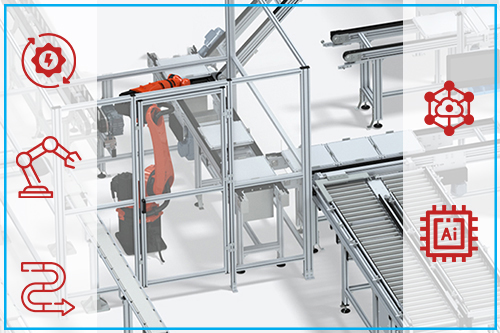Revolutionizing Efficiency: Top Five Upcoming Changes in the Conveyor Industry
Posted on

The conveyor industry, a crucial player in various sectors, is on the brink of transformation. Technological advancements, sustainability concerns, and the demand for increased efficiency while maintaining quality are driving changes that promise to reshape the landscape of conveyor systems. In this blog post, we will explore the top five upcoming changes that are set to revolutionize the conveyor industry.
What are the Top Five Upcoming Changes in the Conveyor Industry in 2024 and Beyond?
1. Incorporation of Artificial Intelligence:
The integration of artificial intelligence (AI) is poised to be a game-changer in the conveyor industry. AI-powered conveyor systems can optimize processes by predicting maintenance needs, reducing downtime, and improving overall efficiency. Smart conveyors equipped with sensors and AI algorithms can adapt to changing production demands in real-time, making the entire manufacturing or logistics process more responsive and streamlined. Additionally, they can analyze real-time data to predict maintenance needs and help avoid potential line malfunctions.
2. IoT Connectivity for Enhanced Monitoring:
The Internet of Things (IoT) is increasingly becoming a staple in industrial settings, and the conveyor industry is no exception. IoT-connected conveyor systems enable real-time monitoring and data analysis; similar to AI but different in that multiple pieces of equipment are connected. This connectivity allows for predictive maintenance, early detection of potential issues, and the optimization of energy consumption. Companies can expect reduced operational costs and increased productivity through proactive and data-driven decision-making. For conveyor systems, AI and IoT really go hand in hand.
3. Modular and Flexible Conveyor Designs:
Traditional conveyor systems often lack flexibility and adaptability, making it challenging to accommodate changes in production, manufacturing or logistics processes. The upcoming trend in conveyor design involves modularity and flexibility. Manufacturers are developing conveyor systems that can be easily reconfigured to meet evolving needs. This adaptability ensures that businesses can stay agile in the face of changing market demands and production requirements. Conveyors built using modular t-slot aluminum extrusions, such as mk conveyors, have the advantage in this space because they inherently lend themselves to being reconfigured over time.
4. Focus on Sustainability:
As environmental consciousness grows, the conveyor industry is shifting towards more sustainable practices. Manufacturers are exploring materials and designs that reduce energy consumption and waste. Additionally, there's a push for the development of conveyor systems that are easily recyclable at the end of their lifecycle. Sustainability-focused conveyors not only align with corporate social responsibility goals but also appeal to businesses seeking to minimize their environmental impact. It is common for conveyors to utilize pneumatic devices for stopping or locating parts; however, pneumatic devices and the air systems within factories are known for their inefficiencies. For this reason, many new conveyor systems are being constructed using modern-electric counterparts to legacy pneumatic actuators.
5. Autonomous and Collaborative Robotic Integration:
The rise of automation is transforming conveyor systems into more than just transport mechanisms. Integrating autonomous and collaborative robots with conveyors allows for more complex tasks, such as sorting, picking, and packing. This integration enhances efficiency, reduces labor costs, and opens new possibilities for industries requiring intricate and precise handling of goods. The conveyors that are integrated with these robotic solutions can be highly customized to meet the demands of the robot. These customizations can include backlit areas, precision indexing, along with rapid or extreme slow speeds to synchronous with robotic movement.
Conclusion:
The conveyor industry is on the cusp of significant changes driven by technological innovation, sustainability initiatives, and the need for increased efficiency. As AI, IoT connectivity, modular designs, sustainability, and robotic integration become integral components of conveyor systems, businesses stand to benefit from enhanced productivity, reduced operational costs, and a more sustainable approach to material handling. Embracing these upcoming changes will position companies at the forefront of a conveyance revolution, unlocking unprecedented opportunities for growth and competitiveness.
If you would like to learn more about mk's conveyor options, please complete the form below and one of our teams will get in touch with you.
